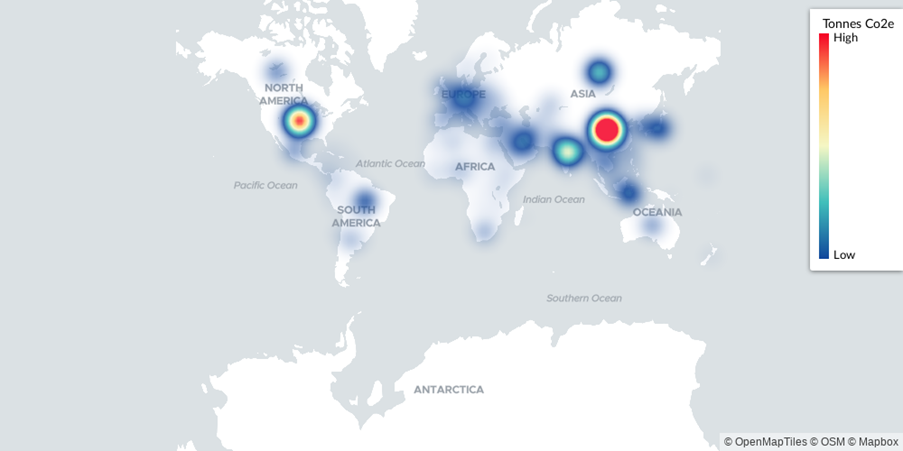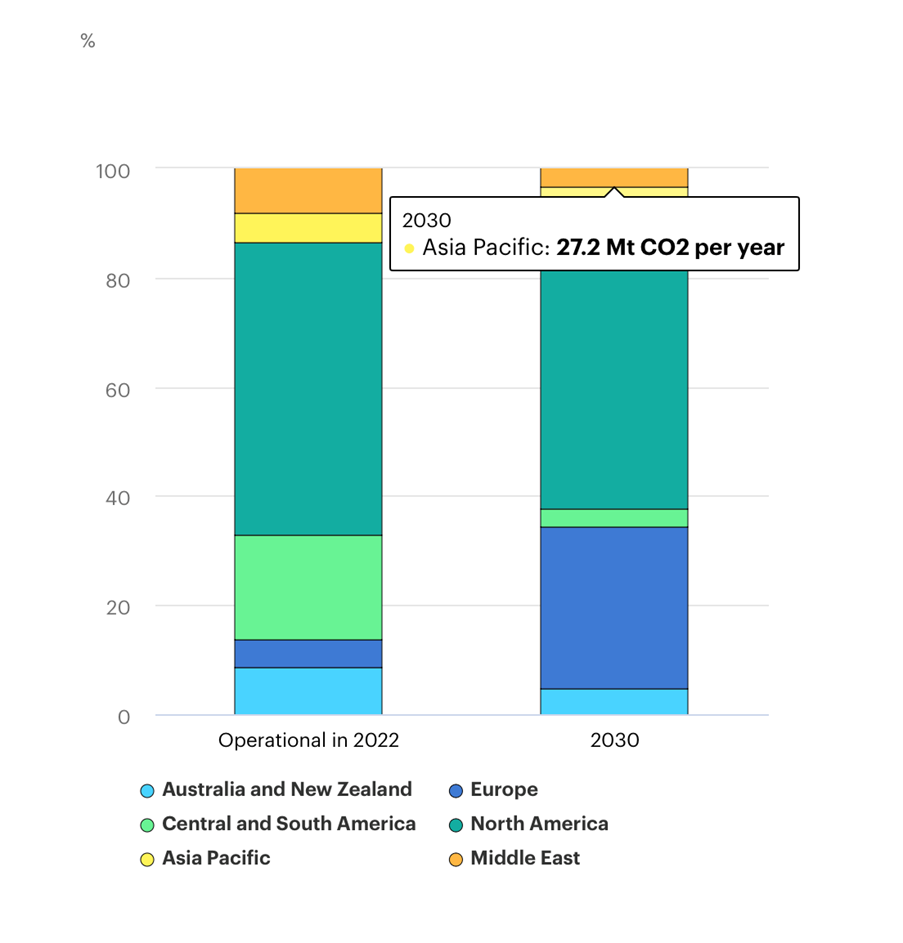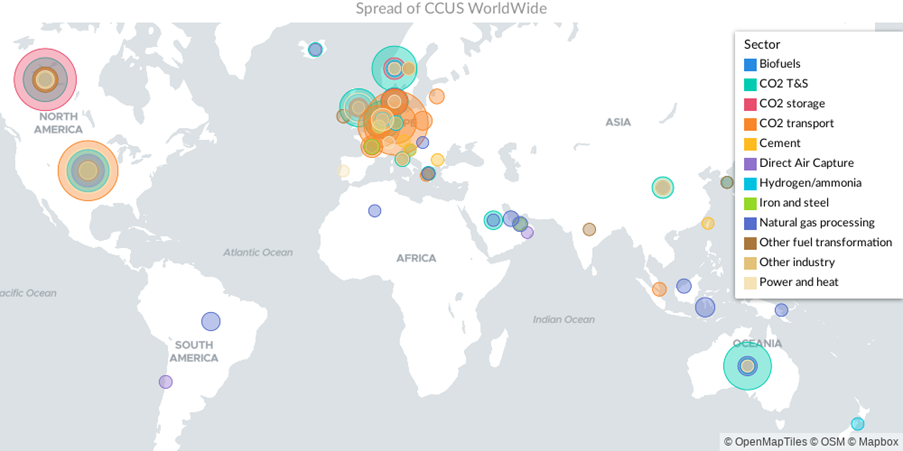Overview: Potential of Asia and Global CCUS progress
IPCC has highlighted the importance of Carbon capture, utilization, and storage (CCUS) and Carbon dioxide Removal (CDR) to achieve global decarbonization goals. CDR will be necessary to reach net zero. If warming exceeds 1.5°C, it could gradually be reduced again by achieving and sustaining net negative global CO2 emissions. This would require the additional deployment of CDR, leading to greater feasibility and sustainability concerns.
The larger the overshoot, the more net negative CO2 emissions would be needed to return to 1.5°C by 2100. CCS is an option to reduce emissions from large-scale fossil-based energy and industry sources provided geological storage is available. When CO2 is captured directly from the atmosphere (DACCS), or from biomass (BECCS), CCS provides the storage component of these CDR methods.
Asia is by far the largest emitter accounting for 53% of the global emissions which makes Asia’s CCUS potential largest in nature.

Asia Pacific has a vast CCUS potential with substantial challenges in terms of cost and scale. Many economies in this region have limited experience and preparedness for CCUS.
There are no operating projects in this region as legal frameworks for CCUS are still in the development phase.
According to IEA (International Energy Agency), the total announced CCUS capacity by 2030 in the Asia Pacific is around 27MT Co2 only.

Global CCUS capacity by 2030 segregated by region (Source: IEA)
New investment incentives, an enhanced role for international finance, and greater regional cooperation will be key to supporting CCUS and clean energy transitions in the region.
For example,
ExxonMobil announced plans for a CCS hub concept in Singapore and Petronas signed an MoU with Japan’s JOGMEC and JX Nippon Oil and Gas Exploration in March 2020 to study the development of Malaysia’s high-CO2 content gas fields with CCUS, etc.

Although most global CCUS progress is found outside Asia–Pacific, the region has started to galvanize into action as countries like Indonesia, China, Taiwan, and India have started CCUS in sectors like Natural Gas processing, Fuel Transformation, CO2 transport, hydrogen, etc.
Scaling CCUS in Asia-Pacific: Four Actions for Regulators and Companies
Though CCUS presents challenges for Asia-Pacific, overcoming them is possible. Four actions that governments and companies can take to unleash the potential of CCUS exist. While some progress has been made, more extensive and faster efforts are necessary.
- Governments and companies need to think about a future cross-border CO2 transport and storage market and can start by setting up government-to-government working groups, initiating mutually beneficial projects, and partnering with private-sector champions to drive deployment.
- Governments can support CCUS development by attaching a cost to carbon emissions, implementing carbon-market systems, and introducing tax allowances and other related mechanisms.
- Companies could form partnerships to increase government buy-in, accelerate technology development, bring together capabilities across the value chain, and de-risk execution.
- Increasing public awareness and support is critical to ensuring grassroots support for government CCUS policies and budgets and potentially passing on carbon-abatement costs to consumer end-products. This requires collaboration with academic institutions, non-governmental organizations, local community leaders, and the media.
Synopsis:
Although the potential for carbon capture, utilization, and storage (CCUS) in Asia-Pacific is significant, there are several challenges that need to be addressed. Despite the momentum generated by recent developments, such as the Paris Agreement and national-level carbon-reduction targets, most governments and companies in the region have yet to take decisive action to advance CCUS deployment.
This reluctance may be due to various factors, including the lack of clear policies and regulations, limited technical expertise, and uncertainty around funding mechanisms.
However, it is crucial for Asia-Pacific to take swift and bold steps toward CCUS deployment, given the urgent need to mitigate greenhouse gas emissions and combat climate change. By doing so, the region can gain a competitive advantage in the global decarbonization journey and position itself as a leader in CCUS technology and infrastructure. This will require a coordinated effort from governments, industry, academia, and civil society to overcome the challenges and realize the full potential of CCUS in Asia-Pacific.

![[object Object]](/lib_ubcXiSgTRmkLVyyT/k8w528b9mk1p20to.png?w=400)
